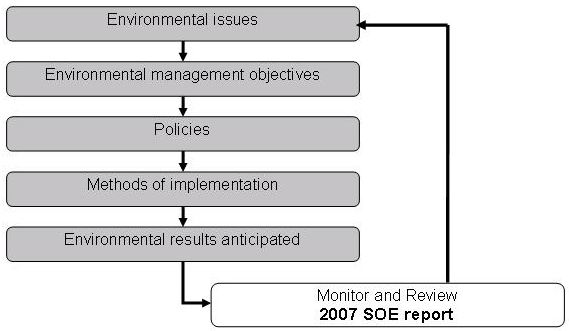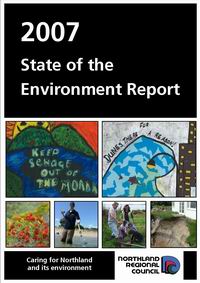1 Introduction
In accordance with good practice, the requirements of the Resource Management Act and commitment made in the Long Term Council Community Plan the Council has prepared a State of the Environment (SOE) Report for Northland. This is Northland Regional Council's second SOE report, which builds on the first report published in 2002. It aims to inform both the Regional Council and public of the human pressures acting on the environment, the current state of Northland's environment and the Council's and communities response to environmental issues. Where possible this report also presents information on whether the state of the environment is getting better, getting worse or staying the same.
This report brings together information gathered by the Council's various monitoring programmes, including both state of the environment monitoring, and resource consent and other compliance monitoring. Information has also been included from other agencies that collect environmental related data, such as the District Councils, Department of Conservation and National Institute of Water and Atmospheric Research.
The content of the SOE report is linked to the Regional Policy Statement for Northland. The RPS provides an overview of and direction for the environmental management of the region. To achieve this, it contains objectives, policies, methods and anticipated environmental outcomes. This report also aims to inform the process of measuring the effectiveness of our policies and actions.
This report does not aim to provide the solutions to specific resource management problems – rather it provides information to help with environmental decision making, such as the upcoming Long Term Council Community Plan review process.

Report contents
 This SOE report includes around 500 pages of information split into 17 chapters as follows:
This SOE report includes around 500 pages of information split into 17 chapters as follows:
2. Regional profile - provides an overview of Northland by giving a brief description of the region.
3. Air quality
4. Solid waste management – includes refuse and recycling volumes and landfill monitoring
5. Waste hazardous substances – includes contaminated sites
6. Coastal management
7. Coastal hazards
8. Coastal water quality
9. Lake quality – includes water quality and ecosystem health
10. Surface water quantity – covers river flow, lake level, rainfall and tidal monitoring
11. Groundwater resources – includes information on both groundwater quality and quantity
12. Surface water quality – predominately covers rivers and streams
13. Geothermal resources
14. Land and soils
15. Indigenous biodiversity
16. Natural hazards
17. Transportation
18. Tangata Whenua – provides information on how tangata whenua are involved in environmental monitoring
Chapter format
In the introduction of each chapter the objectives and environmental results anticipated from the Regional Policy Statement are summarised. The information where possible follows the same Pressure – State – Response framework used in the 2002 SOE report and by the Ministry for the Environment for national reporting. For example:
· Pressure includes indicators of environmental pressures or issues, such as activities or their effects that are believed to contribute to environmental stress.
· State includes indicators of environmental conditions, such as the state of natural and physical resources and ecosystems.
· Response includes indicators of society's responses, such as deliberate actions undertaken to address observed environmental changes or adverse effects.
Each chapter also includes a summary of areas identified where improvement is needed and ways that you can help to preserve and protect Northlands environmental resources. All chapters contain direct links to other relative technical and background reports already available on the Councils and other agencies websites. Finally most chapters include case studies which present specific environmental issues and examples.
